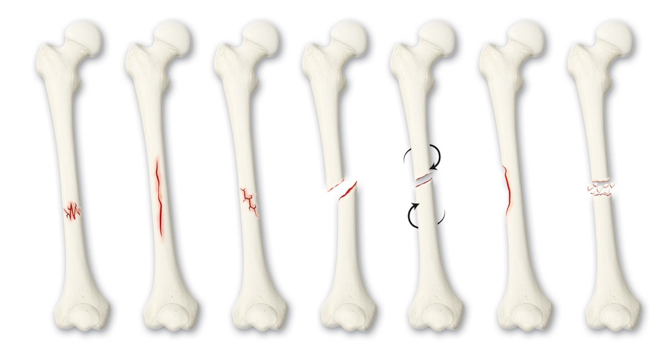Home / Limb Deformities / Fracture Treatments
Open fractures with severe soft tissue damage and complex fractures with high levels of instability require mechanical stabilization to allow alignment of the fragments while healing occurs.1

Important safety information: Download the Product Instructions For Use.
The Orthofix Limb Reconstruction System™ (LRS) is a series of modular monolateral external fixators used in reconstructive procedures for treatment of short stature, bone loss, open fractures, non-union, and angular deformities.
Important safety information: Download the Product Instructions For Use.
The MiniRail External Fixation System consists of small rails and screws for fixation of small bones when a condition does not allow for implanting internal devices. The MiniRail is designed to help with a variety of deformity corrections and lengthening procedures of small bones and joints in the foot and upper limb.
Important safety information: Download the Product Instructions For Use.
TL-HEX is a dynamic, 3D external fixation system that combines hardware and software to correct bone deformities. This hexapod-based system functions as a 3D bone segment-repositioning module. In essence, the system consists of circular and semi-circular external supports secured to the bones by wires and half-pins, interconnected by six struts.
Important safety information: Download the Product Instructions For Use.
The Ilizarov System has experienced many modifications over the last fifty years. The TrueLok™ Ring Fixation System, developed at Texas Scottish Rite Hospital for Children (TSRHC) in Dallas, Texas, is one of the modern variants of the original fixator, but preserves many of the original principles of Professor Ilizarov. It consists of aluminum rings available in different sizes, connected to the bone through metal wires or/and bone screws. The relative movements of the rings allow the correction of almost all the bone deformities in upper and lower limbs and in the foot.

Some simple fractures can be treated conservatively with casting. Every fracture is different, and less stable, open or complex fractures usually require more support to restore bone position and alignment. Some form of mechanical fixation may be needed, and this fixation may be external or internal, depending on surgeon preference and the type of fracture.2 Bone grafting may also be required to encourage healing.2 External fixation is used as definitive treatment in about 7-10 percent of fracture cases; it may also be used as temporary fixation, later replaced by plating or nailing.

Left untreated, the broken bone or bones may fail to heal correctly, leading to further discomfort, pain and lack of mobility. The severity of the initial injury is an important factor.